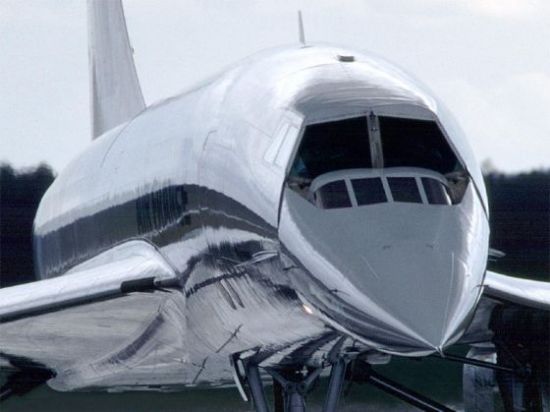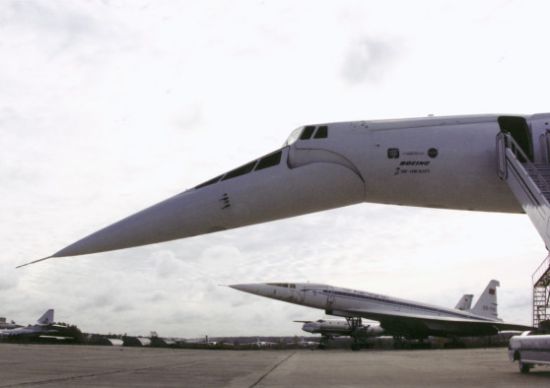|
||||||||||
|
|
||||||||||
|
||||||||||
|
|
||||||||||
Why does the Concorde have a drooped nose?
- question from Vikas Goel


The nose is locked down during takeoff and landing but is moved to the up position during flight. This complicated movable nose is necessary to improve pilot visibility during takeoff and landing. Both the Concorde and Tu-144 are optimized to fly at Mach 2 or greater, and the external shape of the aircraft is absolutely vital to achieving these high speeds. Designers were forced to create a very long, slender fuselage with a sharp needle-like nose to reduce the drag at supersonic speeds. In addition, these aircraft require short wingspans so that the wingtips remain within the cone-shaped shockwave created by the nose as the plane cruises at Mach 2. These two aerodynamic requirements cause two adverse impacts on pilot visibility.
First, aircraft with short wingspans usually have to takeoff and land at rather high angles of attack to generate enough lift and compensate for the smaller wing. As the angle of attack increases, the cockpit is forced higher and the pilots have to look down at a steeper angle to see the ground. Second, the longer, more pointed nose sticks out further in front of the cockpit. If we combine the high angle of attack and the long nose, it is clear that the pilot's ability to see out the cockpit window will be severely limited. In fact, the pilots would have virtually no forward visibility at all. The only solution available to the designers of the day was to swivel the nose downward out of the way to give the pilots a better forward view out the cockpit.
When NASA began studying the feasibility of a replacement for the Concorde and Tu-144, they quickly realized that
this heavy, expensive, complicated mechanism needed to be eliminated if a supersonic transport had any hope of
being economical. The more advanced computer technology available today allowed NASA engineers to develop a
system of video cameras and infrared sensors that create a virtual cockpit display in place of the forward
windshield. More information on this virtual cockpit can be found in a previous question about the
High Speed Civil Transport.
- answer by Joe Yoon, 11 November 2001
Related Topics:
Read More Articles:


|
Aircraft | Design | Ask Us | Shop | Search |

|
|
| About Us | Contact Us | Copyright © 1997- | |||
|
|
|||